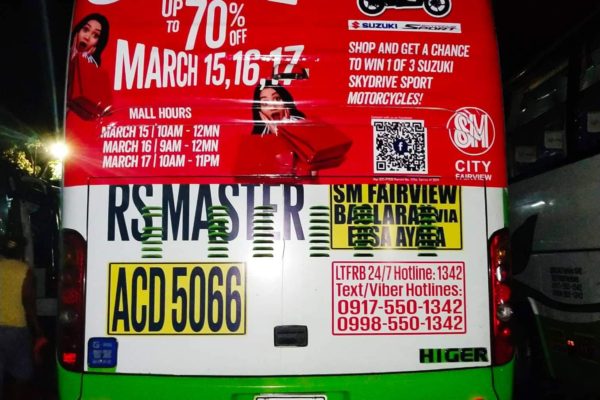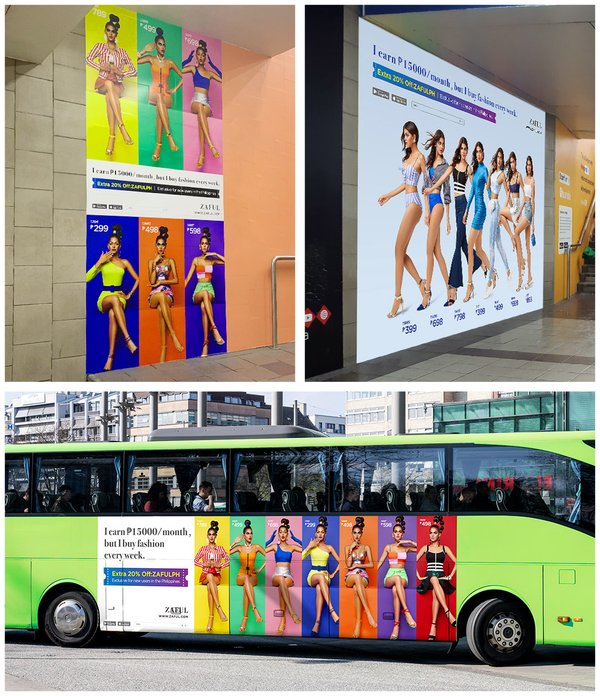How Transit Advertising Can Change Mass Transit Spaces Into Dynamic Advertising And Marketing Operatings Systems
Transportation advertising and marketing holds significant capacity to redefine public transport spaces right into dynamic marketing systems that educate and engage. As we explore the diverse benefits and advancing approaches of transportation advertising, it raises the concern of exactly how this change might redefine our interactions with both brand names and the city atmosphere.
Advantages of Transportation Marketing

In addition, transit advertising is very cost-efficient compared to typical media. It allows advertisers to accomplish high impacts at reduced expenses, making best use of roi. The restricted audience of commuters supplies a possibility for brand names to convey their messages to people that are often responsive throughout their travel times.
Furthermore, the vibrant nature of transportation advertising and marketing enables projects to be updated frequently, making certain that messaging remains appropriate and timely. This flexibility can be important in reacting to market fads or advertising events, maintaining the brand top-of-mind for customers. Last but not least, the pervasive visibility of transportation marketing adds to brand recall; duplicated direct exposure within familiar traveling contexts reinforces brand recognition and fosters consumer loyalty, eventually boosting and driving sales brand track record.
Kinds of Transportation Advertising
Public transportation systems supply numerous formats for marketing, each accommodating various advertising and marketing strategies and audience interaction techniques. One noticeable type is external bus and train covers, which cover the entire automobile and develop a mobile signboard result, enabling high exposure in urban atmospheres. These covers can capture focus as they go across busy roads, reaching a varied audience.
An additional preferred format is indoor marketing, that includes posters, digital screens, and ads on transit seats. These placements engage passengers throughout their trip, strengthening brand name messaging in a restricted area. Digital shows, particularly, use the advantage of dynamic web content, enabling advertisers to update messages in real-time.
Terminal advertising and marketing is also substantial, including posters, banners, and interactive kiosks within transit terminals. These advertisements take advantage of foot website traffic and can target specific demographics based upon place.
Last but not least, advertising collaborations with transportation authorities can cause special projects, such as themed transportation experiences or events, enhancing the general involvement with travelers. Each sort of transit advertising uses distinct advantages, permitting brands to customize their method to efficiently reach their target market within the public transportation ecosystem.
Involving Travelers Efficiently
Travelers are progressively flooded with advertising messages throughout their daily journeys, making it important for brand names to engage them in ingenious methods. To record interest in this jampacked area, advertisers have to prioritize creative thinking and significance. Using distinctive visuals and concise messaging can considerably boost the possibility of engagement.
Interactive components, such as QR codes or augmented reality attributes, can also change static ads right into immersive experiences, cultivating a deeper link with the audience. Brands need to concentrate on addressing travelers' rate of interests and demands, customizing messages to resonate with their way of living, whether through promos for neighborhood services or solutions developed to boost their commuting experience.
In addition, timing plays a crucial function; tactically positioning ads during optimal travelling hours can make the most of exposure and impact. Involving travelers effectively also entails leveraging social media sites combination, enabling guests to share their promos or experiences straight from transportation systems, consequently magnifying brand reach.
Basically, reliable involvement depends upon comprehending the commuter trip and developing compelling, interactive, and relevant advertising and marketing experiences that not just catch attention but additionally drive activity and loyalty. By doing so, brands can change mass transit right into a dynamic marketing system that reverberates with its target market.

Measuring Marketing Effect
Exactly how can brands properly examine the efficiency of their advertising projects in transportation environments? Gauging the impact of transportation marketing requires a complex strategy that integrates qualitative and measurable metrics. One prevalent approach is tracking interaction via mobile analytics, where brand names can analyze foot website traffic patterns and app communications previously, throughout, and after campaigns.
Studies can supply important understandings into brand name recall and consumer sentiment, permitting brands to determine exactly how well their messages resonate with travelers. In addition, keeping an eye on social media engagement pertaining to certain campaigns can expose changes in public understanding and brand name conversation.

Additionally, teaming up with transportation firms can enhance measurement accuracy, as they usually possess comprehensive group information on find ridership trends. By integrating these methods, brand names can develop a detailed understanding of their advertising and marketing effectiveness, guaranteeing that their projects not just reach yet also influence their target market effectively.
Future Fads in Transit Marketing
A considerable shift is expected en route marketing as technological innovations and changing customer behaviors improve the landscape. Transit Advertising Philippines. The integration of interactive media and digital displays is expected to improve interaction, permitting brands to supply dynamic material that resonates with varied target markets. As public transport systems embrace wise technology, marketers will utilize real-time data analytics to tailor messages based upon passenger demographics and actions
Moreover, boosted reality (AR) is positioned to transform the means travelers connect with promotions. By giving immersive experiences, AR can transform an ordinary journey into an engaging story that records attention and fosters brand commitment. This technology will likely encourage advertisers to develop even more experiential campaigns that drive customer interaction.
Sustainability is one more critical pattern influencing transportation marketing. As environmental awareness expands, brand names will significantly seek to straighten with eco-friendly methods, using sustainable materials and advertising eco-friendly campaigns within their projects.
Final Thought
In conclusion, transit advertising uses significant advantages by boosting brand presence and involving a captive target market. Via various styles, such as outside wraps and digital displays, it transforms public transport right into a lively advertising platform. Reliable interaction strategies and durable dimension methods further magnify its impact. As fads develop, the potential for cutting-edge interactions between brand names and commuters is poised to grow, making certain that transportation marketing remains a vital part of modern marketing approaches.
Transportation marketing holds substantial capacity to redefine public transport rooms right into he has a good point vibrant advertising systems read here that engage and notify. The pervasive existence of transit advertising and marketing adds to brand name recall; duplicated exposure within acquainted travel contexts reinforces brand name recognition and cultivates consumer loyalty, inevitably boosting and driving sales brand credibility.
Exactly how can brand names properly examine the effectiveness of their advertising projects in transit environments?In verdict, transportation marketing supplies considerable advantages by enhancing brand visibility and involving a restricted target market. Transit Advertising Philippines. As patterns develop, the capacity for ingenious interactions in between commuters and brands is positioned to grow, guaranteeing that transit advertising and marketing continues to be an important component of modern-day advertising and marketing methods